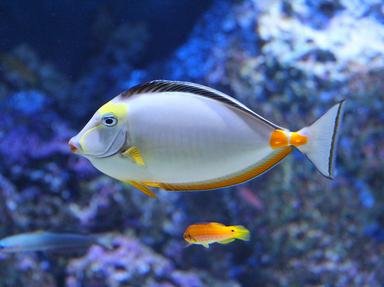Quiz Answer Key and Fun Facts
1. The bony-plated males of this group of species in the Hippocampus genus carry the offspring.
2. Named for their barbels, these diverse and hardy fish have been able to inhabit every continent.
3. These eastern Pacific ovoviviparous fish have unfairly been considered a significant threat to the oyster industry.
4. A master of camouflage, this scaleless tropical and subtropical fish is a patient predator with an extremely rapid strike.
5. Even hippos have found themselves beset upon by this aggressive fish in the Carcharhinus genus.
6. This vividly-coloured tropical fish in the Chaetodontidae family is often an ardent corallivore.
7. Also known as gurnard, these fin-walking bottom dwellers can survive deep water pressure with the help of their armoured plates.
8. Many species of this algae-feeding fish with beak-like teeth are protogynous hermaphrodites.
9. Not to be confused with another animal, this south-east Asian minnow is popular as an aquarium fish.
10. This horrific eel-like predator may use bioluminescence to communicate with kin and to both lure and illuminate prey.
Source: Author
malik24
This quiz was reviewed by FunTrivia editor
rossian before going online.
Any errors found in FunTrivia content are routinely corrected through our feedback system.
